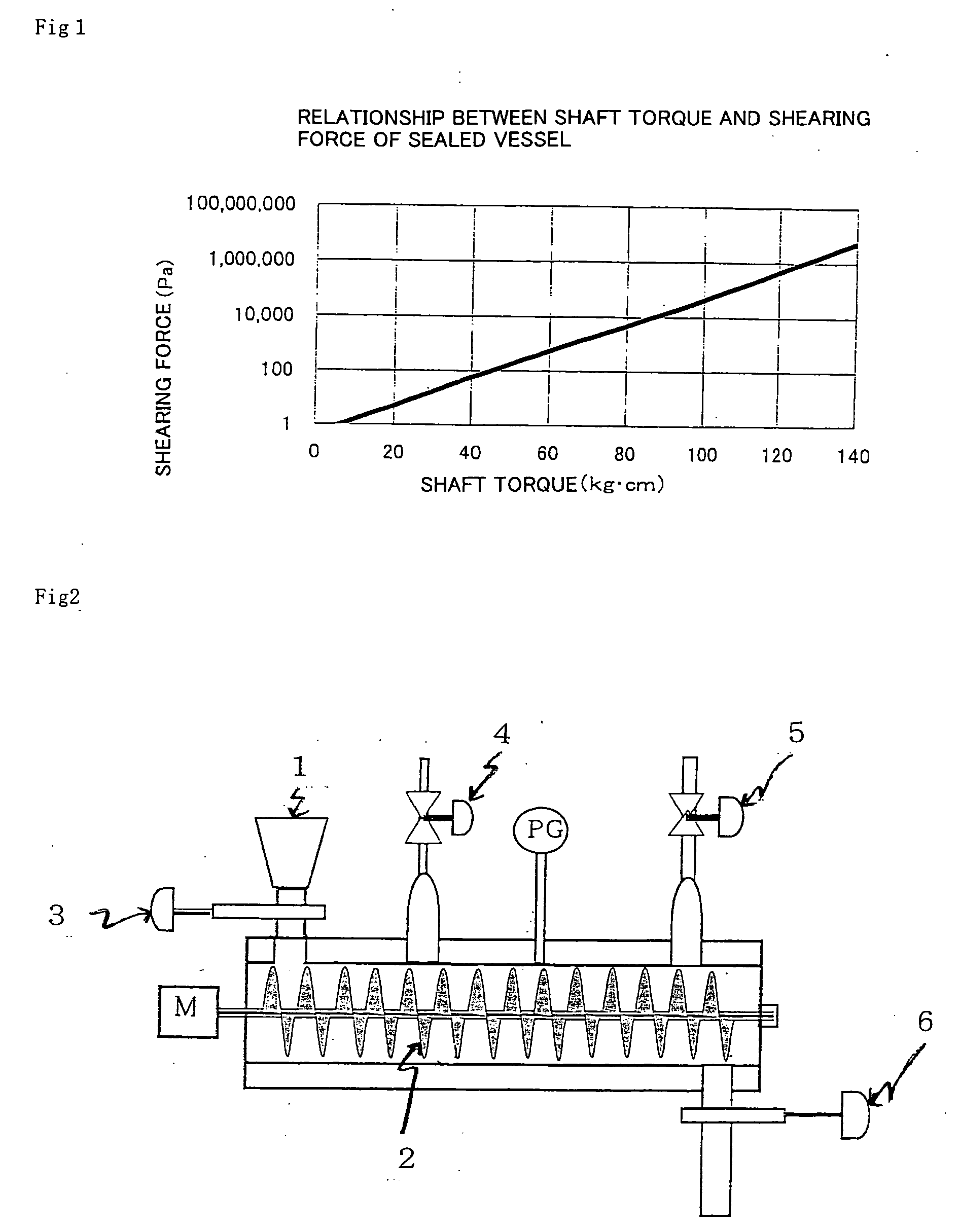Method for dewatering water-containing coal
- Summary
- Abstract
- Description
- Claims
- Application Information
AI Technical Summary
Benefits of technology
Problems solved by technology
Method used
Image
Examples
example 1
[0038] As the sealed vessel, the twin-shaft screw type kneader as shown in FIG. 2 was used. The effective internal volume of the vessel is 8 litters. In FIG. 2, reference numeral 1 designates a coal supply port, reference numeral 2 designates a screw, reference numeral 3 designates a valve, reference numeral 4 designates a steam extracting valve, reference numeral 5 designates an asphalt injecting valve, and reference numeral 6 designates a product removing valve. The brown coal having the above described properties were previously pulverized into 30 to 100 meshes. 10 kg of the pulverized brown coal was prepared in the vessel. Then, after the pressure inside the vessel was made 0.7 MPa with a nitrogen gas, heating was started while the screw was rotated to adjust the temperature to 170° C. Immediately after the temperature reached this temperature, the pressure inside the vessel was adjusted to 1 MPa, and the torque exerted on the stirring shaft was measured, and by using the relati...
example 2
[0040] Example 2 was carried out in the same manner as Example 1 except that heating was conducted at 200° C. under the pressure of 2 MPa for one hour and heating was conducted at 250° C. under the pressure of 4 MPa for one hour. The viscosities (20° C.) of the obtained water slurries were shown in the following Table 3.
TABLE 3Treatment temperature170° C.200° C.250° C.Viscosity (cP)10,0004,000800
[0041] From the result of Example 1, it is found out that with long treatment time, the water slurry with low viscosity is obtained. From the result of Example 2, it is found out that with the higher treatment temperature, the water slurry with lower viscosity is obtained. From the fact that the amount of water as the medium in the water slurry increased, it is obvious that dewatering of the brown coal advanced more as the viscosity of the water slurry reduced.
example 3
[0043] The single-shaft pressing / heating type kneading device having the stirring blade described in Japanese Patent Application Laid-open No. 2000-169274 was used. The brown coal shown in Table 1 was pulverized into 30 to 100 meshes. 15 kg of the pulverized brown coal was supplied in the tank of the device. Then, after the pressure inside the tank was made 0.7 MPa with a nitrogen gas, heating was started with the screw rotated, and the temperature was adjusted to 170° C. Immediately after the temperature reached this temperature, the pressure inside the tank was adjusted to 1 MPa, and the torque exerted on the stirring shaft was measured, and by using the relationship between the torque and shearing force prepared in advance, the shearing force was adjusted to 1 MPa. The treatment was conducted for an hour with the pressure, temperature and shearing force inside the tank kept at the above described values, and water was removed from the brown coal. Then, the tank was cooled to the ...
PUM
 Login to View More
Login to View More Abstract
Description
Claims
Application Information
 Login to View More
Login to View More - R&D Engineer
- R&D Manager
- IP Professional
- Industry Leading Data Capabilities
- Powerful AI technology
- Patent DNA Extraction
Browse by: Latest US Patents, China's latest patents, Technical Efficacy Thesaurus, Application Domain, Technology Topic, Popular Technical Reports.
© 2024 PatSnap. All rights reserved.Legal|Privacy policy|Modern Slavery Act Transparency Statement|Sitemap|About US| Contact US: help@patsnap.com








